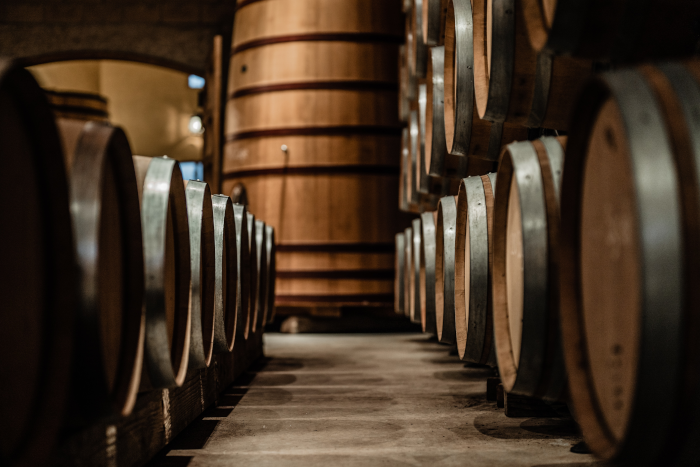Wine Barrels: Types and Their Characteristics
Discover the fascinating world of wine barrels and woods!

The art of ageing wine in wooden barrels has been practised for centuries and is a fundamental part of winemaking. The type of wood used to make the barrel can have a significant impact on the flavour, aroma, and colour of the finished product.
Different woods impart different characteristics, allowing winemakers to customize their wines to specific taste preferences. There are several types of wood used in wine barrels today, read this article and find out their differences.
Oak Barrels
Oak wine barrels have been used in the wine industry for centuries. These barrels are not only storage vessels but also impart unique flavours and aromas to the wine. Oak trees are preferred for making these barrels because of their porous nature, which allows oxygen to permeate through the wood resulting in a slow maturation process of the wine.
The oak barrels come in various sizes ranging from small 5-gallon barrels to large 60-gallon ones. The smaller ones are ideal for home winemakers, while larger ones are used by commercial wineries. They can be made from American, French or Hungarian oak as each type brings its unique flavour profile to the wine.
Oak wine barrels require maintenance and care as well as regular inspection. The interior of the barrel must be kept clean and free from bacterial growth.
Chestnut Barrels
Chestnut wood is a potential material for crafting wine barrels, yet not as commonly adopted as oak wood. The wood possesses a more compact grain structure than oak, which can pose challenges in processing and toasting.
Despite these challenges, chestnut wood yields a unique flavour profile that can complement the taste of wine. The wood imbues the wine with delicate hints of vanilla, coconut, and spices, especially when paired with specific grape varieties.
In the past, chestnut wood was frequently used for wine barrel making in areas without easy access to oak. Even today, some wine producers in countries such as Italy and Spain continue to use chestnut wood for barrel production.
Overall, chestnut wood remains a viable option for crafting the barrels, albeit less commonly used due to its distinct characteristics and limited availability.
Acacia Wood Barrels
Acacia wood wine barrels are becoming increasingly popular in the wine industry. Unlike traditional oak barrels that have been used for centuries, acacia wood offers unique characteristics that enhance the flavour and aroma of the wine. Acacia wood is native to Australia and Africa, and it’s known for its durability and resistance to rotting.
The tight grain structure of acacia wood ensures minimal oxygen transfer during ageing, resulting in a more concentrated flavour profile. The wood also imparts subtle notes of vanilla, coconut, and even floral aromas that complement the wine’s natural flavours. Additionally, acacia wood is naturally low in tannins compared to oak barrels, allowing winemakers to age their wines for longer periods without overpowering them with excessive tannin levels.
Another advantage of acacia wood barrels is their sustainability factor.
Cherry wood barrels
Cherrywood wine barrels have emerged as a popular choice for wine enthusiasts and winemakers. These barrels are made by hand from the highest quality cherrywood, which imparts unique flavours to the wine. Cherrywood is known for its distinct aroma and subtle sweetness, making it an excellent choice for ageing wines.
The process of crafting cherrywood wine barrels involves selecting only the finest wood and carefully cutting it into staves. The staves are then dried to exact specifications to ensure they are free of any defects or warping that could affect the final product's quality. Once dry, the staves are assembled into a barrel using traditional cooperage techniques.
Cherrywood wine barrels offer several benefits over other types of wooden barrels. They provide desirable flavours and aromas while also allowing for slow oxygenation, which helps develop complex flavours in the wine over time.
Conclusion: Ideal Wood for Wine Aging
To conclude, there are numerous wood options for wine ageing. Oak, chestnut, and acacia are widely used and offer unique flavour profiles. Selecting the ideal wood depends on individual taste, as it can be challenging to anticipate its impact on aroma and flavour. Those desiring a more subdued influence on their wines may prefer lighter woods like cherry.